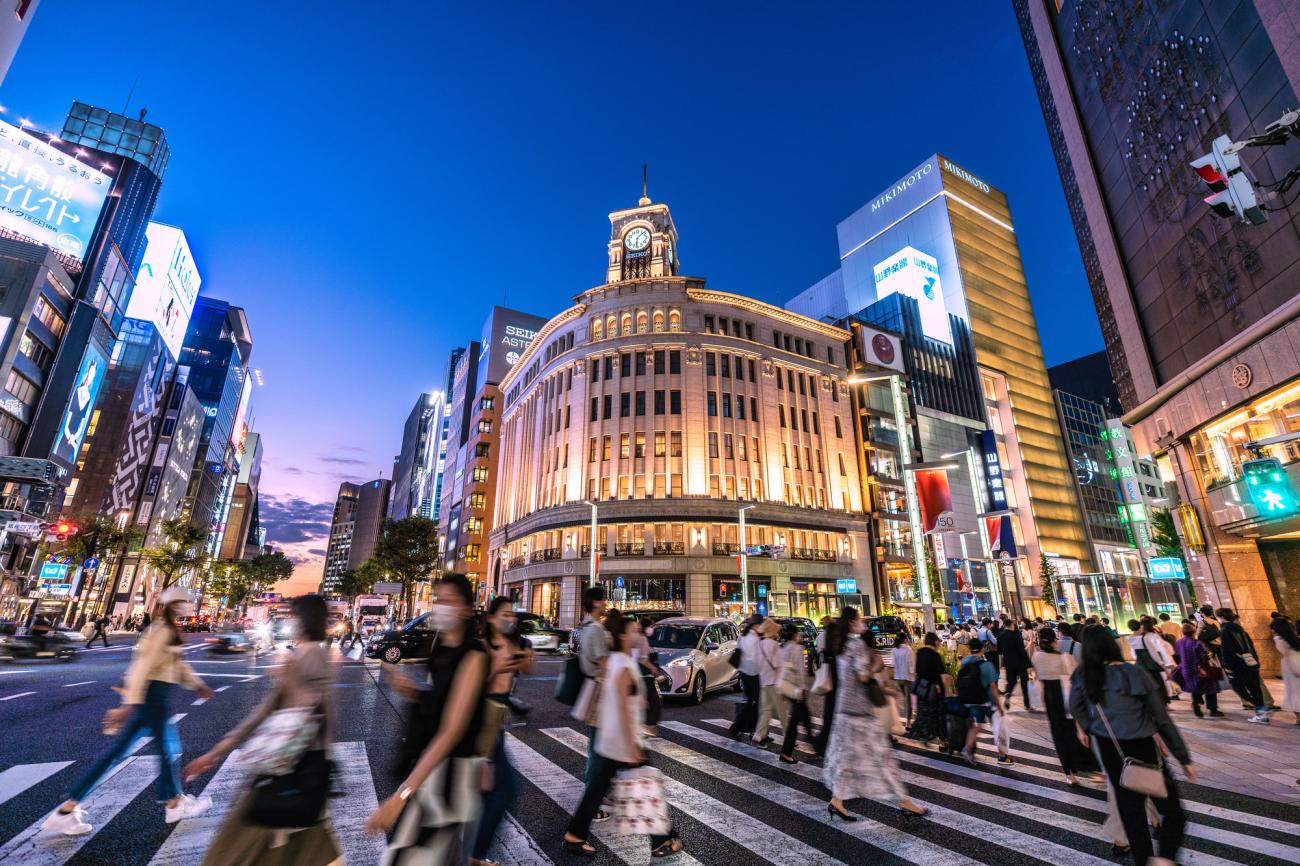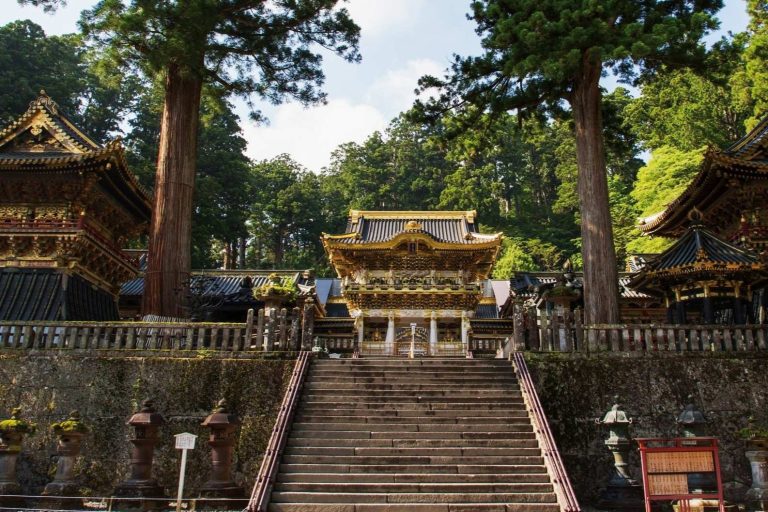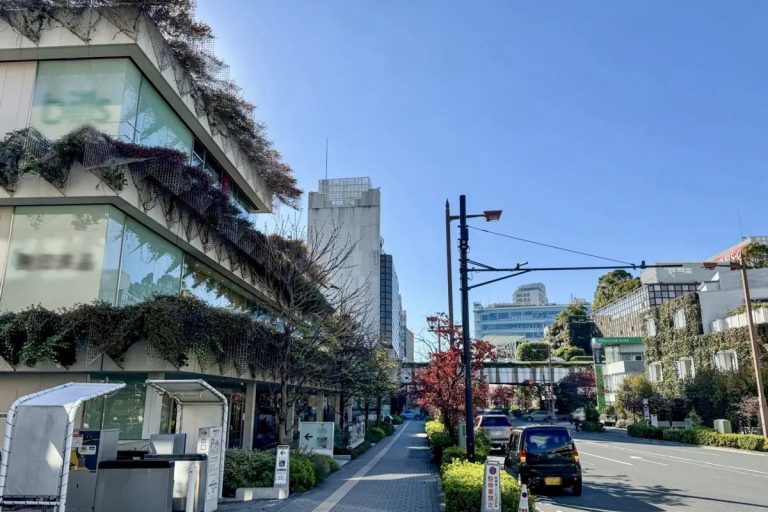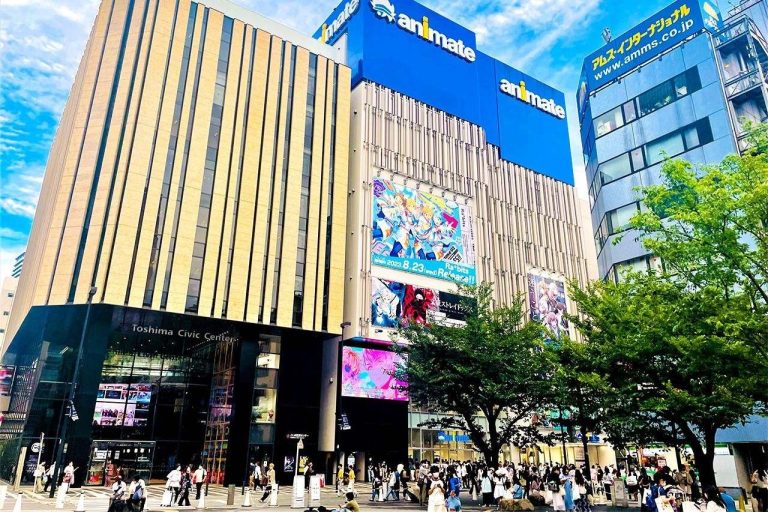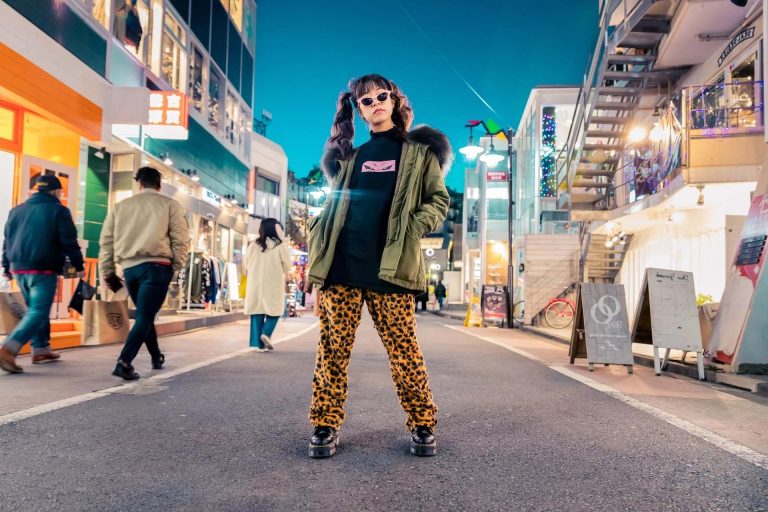Overview of Ginza
Ginza stands as Tokyo’s most prestigious district, where gleaming skyscrapers house world-renowned luxury brands and Michelin-starred restaurants create an atmosphere of refined elegance. This upscale neighborhood has evolved from its humble beginnings into Japan’s answer to Paris’s Champs-Élysées, attracting millions of visitors who seek the finest in shopping, dining, and cultural experiences. The district’s perfectly manicured streets showcase a harmonious blend of traditional Japanese aesthetics and cutting-edge modern architecture, making every stroll feel like a journey through both time and luxury. Real estate prices here reach astronomical heights of up to ten million yen per square meter, reflecting the area’s exclusive status and prime location in the heart of Tokyo.
Historical Background
The name Ginza literally translates to “silver seat,” reflecting its origins during the Edo period when it served as the location for Japan’s official silver coin mint. This historical connection to precious metals seems prophetic, as the area would eventually become synonymous with luxury and high-value commerce. The devastating 1923 Great Kanto Earthquake marked a turning point for Ginza, as the subsequent reconstruction efforts transformed it from a traditional merchant quarter into a modern retail destination that would set the standard for upscale shopping districts worldwide.
Modern Development
Today’s Ginza represents the pinnacle of urban sophistication, with towering glass facades housing international flagship stores and cutting-edge architectural marvels like Ginza Six and Tokyu Plaza Ginza. The district has masterfully integrated modern retail concepts while preserving its cultural heritage, creating spaces where traditional Japanese craftsmanship coexists with global luxury brands. Recent developments have focused on creating immersive shopping experiences that go beyond mere retail, incorporating art installations, cultural spaces, and innovative dining concepts that reflect contemporary Tokyo’s dynamic spirit.
Cultural Significance
Ginza holds a special place in Japanese culture as a symbol of prosperity, taste, and social status. The district represents the Japanese concept of “omotenashi” (hospitality) at its finest, where every detail is carefully considered to create an exceptional experience for visitors. Its influence extends beyond commerce, serving as a trendsetter for fashion, design, and lifestyle throughout Japan and Asia. The area’s cultural importance is further reinforced by its role as a venue for traditional performing arts, particularly kabuki theater, which maintains deep roots in this historically significant neighborhood.
Shopping Experience
The shopping experience in Ginza transcends typical retail therapy, offering a curated journey through the world’s most coveted brands and exclusive Japanese retailers. Every storefront tells a story of craftsmanship, innovation, and attention to detail that defines the Japanese approach to luxury retail. The district’s layout encourages leisurely exploration, with wide sidewalks and elegant window displays that transform shopping into an art form. From intimate boutiques tucked away in quiet corners to grand flagship stores that occupy entire city blocks, Ginza caters to every taste and budget while maintaining its reputation for exceptional quality and service.
Iconic Department Stores
Ginza Mitsukoshi stands as the crown jewel of Japanese department stores, offering multiple floors of carefully curated merchandise ranging from haute couture to traditional crafts. The legendary Wako building, with its distinctive clock tower, has been a Ginza landmark since 1932, housing exquisite jewelry, watches, and luxury accessories. Matsuya Ginza provides another dimension to the shopping experience, featuring both international brands and Japanese designers under one elegant roof, while their renowned food halls showcase the finest in Japanese culinary culture.
Flagship Luxury Brands
International luxury houses have chosen Ginza as their Japanese headquarters, creating spectacular flagship stores that serve as brand showcases. Chanel’s multi-story boutique exemplifies French elegance adapted for Japanese sensibilities, while Louis Vuitton’s architectural marvel demonstrates how luxury retail can become a destination in itself. Gucci, Hermès, and Cartier have each created unique spaces that reflect their brand heritage while acknowledging the sophisticated tastes of Ginza’s discerning clientele, making each visit feel like entering a private salon.
Specialty Stores and Boutiques
Beyond the major brands, Ginza harbors numerous specialty stores that offer unique shopping experiences unavailable elsewhere. Itoya, the legendary stationery store, transforms the simple act of buying paper goods into an exploration of Japanese craftsmanship and attention to detail. Mikimoto’s pearl boutique showcases Japan’s contribution to luxury jewelry, while Shiseido’s flagship store combines cosmetics retail with cultural exhibitions. The Apple Store Ginza brings technology retail to new heights, creating a space where innovation meets Japanese design principles.
Dining in Ginza
Ginza’s culinary landscape represents the pinnacle of Japanese dining culture, where traditional techniques meet international influences to create extraordinary gastronomic experiences. The district boasts more Michelin-starred restaurants per square kilometer than virtually anywhere else in the world, making it a pilgrimage destination for food enthusiasts. From intimate sushi counters where master chefs demonstrate decades of skill to elegant French restaurants that reinterpret classic cuisine through a Japanese lens, Ginza offers dining experiences that justify its reputation as one of the world’s great food destinations. The area’s restaurants reflect the same attention to detail and commitment to excellence that characterizes its shopping establishments.
Gourmet Sushi Spots
Ginza’s sushi scene represents the absolute pinnacle of this iconic Japanese cuisine, with legendary establishments like Sukiyabashi Jiro setting global standards for excellence. These intimate restaurants, often seating fewer than a dozen guests, provide front-row seats to witness master chefs transform the finest ingredients into edible art. Otaru Masazushi offers a more accessible but equally impressive experience, where traditional techniques meet contemporary presentation. The concentration of world-class sushi restaurants in such a small area creates a competitive environment that pushes each establishment to continually refine their craft and source the most exceptional ingredients available.
French and International Cuisine
Ginza’s international dining scene showcases how global cuisines can be elevated through Japanese precision and attention to detail. French restaurants here often surpass their Parisian counterparts in terms of technique and ingredient quality, with chefs who have trained in Europe bringing their skills back to Tokyo’s demanding culinary landscape. Italian, Spanish, and contemporary fusion restaurants complete the international offerings, each adapting their traditional recipes to local tastes while maintaining authentic flavors and cooking methods that satisfy both Japanese diners and international visitors.
Department Store Food Halls
The basement food halls, known as “depachika,” in Ginza’s department stores offer a more casual but equally impressive dining experience. These underground culinary wonderlands feature dozens of vendors selling everything from perfectly crafted bento boxes to artisanal sweets and imported delicacies. Mitsukoshi’s food hall exemplifies this concept, with vendors who are often extensions of famous restaurants, allowing visitors to sample high-quality cuisine at more accessible prices. The presentation and quality standards in these food halls match those of dedicated restaurants, making them perfect for discovering new flavors and experiencing Japanese food culture.
Art and Culture
Ginza’s cultural offerings extend far beyond shopping and dining, establishing it as a significant center for Japanese arts and traditional performance. The district serves as a bridge between Japan’s rich cultural heritage and its contemporary artistic expressions, hosting everything from traditional kabuki performances to cutting-edge contemporary art exhibitions. Museums, galleries, and cultural centers throughout the area provide visitors with opportunities to engage with Japanese culture at multiple levels, from observing master craftsmen at work to participating in hands-on cultural experiences. This cultural dimension adds depth to any visit, transforming a shopping trip into a comprehensive exploration of Japanese aesthetics and traditions.
Kabuki Theatre at Kabukiza
The Kabukiza Theatre stands as Ginza’s most important cultural landmark, preserving and presenting Japan’s traditional kabuki performing art for both domestic and international audiences. This architectural masterpiece combines traditional design elements with modern amenities, creating an authentic atmosphere for experiencing centuries-old dramatic traditions. Regular performances feature renowned actors who have inherited their skills through generations of family training, while English audio guides and subtitles make these complex stories accessible to international visitors. The theater’s gift shop and restaurant extend the cultural experience, offering kabuki-themed merchandise and traditional cuisine.
Art Galleries and Exhibitions
Ginza houses numerous art galleries that showcase both established and emerging artists, with the Shiseido Gallery leading the way in presenting innovative contemporary art exhibitions. These intimate spaces often feature works that blur the boundaries between traditional Japanese aesthetics and modern artistic expression. Gallery hopping in Ginza reveals the district’s role as a tastemaker in Japan’s art scene, with exhibitions that often influence trends throughout the country. Many galleries maintain close relationships with artists, offering visitors opportunities to meet creators and gain insights into their creative processes.
Cultural Events and Festivals
Throughout the year, Ginza hosts various cultural events and festivals that celebrate both traditional and contemporary Japanese culture. These events transform the district’s elegant streets into stages for performances, demonstrations, and interactive cultural experiences. Seasonal festivals often feature traditional music, dance, and craft demonstrations, while contemporary events might showcase fashion shows, art installations, or culinary competitions. The district’s cultural calendar ensures that visitors can always find something beyond shopping and dining to enrich their understanding of Japanese culture.
Accessibility and Transportation
Ginza’s exceptional accessibility makes it one of Tokyo’s most convenient destinations, with multiple transportation options connecting it to every corner of the metropolitan area. The district’s central location and comprehensive transit connections reflect its importance as a commercial and cultural hub, ensuring that visitors can easily reach Ginza regardless of their starting point in Tokyo. The transportation infrastructure has been designed to handle the massive daily influx of shoppers, diners, and cultural enthusiasts while maintaining the district’s elegant atmosphere. Strategic planning has created seamless connections between different modes of transport, making navigation intuitive even for first-time visitors.
Metro and Train Lines
Multiple Tokyo Metro lines converge at Ginza Station, including the Ginza, Hibiya, and Marunouchi lines, providing direct connections to major destinations throughout Tokyo. Yurakucho Station offers additional access via JR lines, while nearby stations like Shimbashi and Tokyo Station expand the connectivity options. This comprehensive rail network means that visitors staying in areas like Shibuya nightlife and shopping districts or exploring Harajuku fashion and culture can reach Ginza within minutes. The stations themselves feature elegant design elements that prepare visitors for the refined atmosphere they’ll encounter above ground.
Weekend Pedestrian Zone
One of Ginza’s most beloved features is the weekend pedestrian zone along Chuo-dori, the main avenue, which closes to vehicle traffic on Saturdays, Sundays, and holidays. This transformation creates a European-style promenade where visitors can stroll leisurely between shops, stop at outdoor cafes, and enjoy street performances. The pedestrian zone extends the shopping and dining experience onto the street itself, with many establishments setting up outdoor seating and displays. This car-free environment allows visitors to fully appreciate the district’s architecture and window displays while creating a more relaxed, community-oriented atmosphere.
Proximity to Airports
Ginza’s strategic location provides convenient access to both Narita and Haneda airports, making it an ideal first or last stop for international visitors. The Airport Express trains and limousine buses offer direct connections, allowing travelers to reach the district within an hour of landing. This accessibility has made Ginza a popular destination for transit passengers with layovers, who can experience Tokyo’s luxury shopping and dining culture even during brief visits. The proximity to airports also makes it convenient for visitors to purchase last-minute gifts or enjoy a final meal before departure.
Notable Attractions
Beyond its renowned shopping and dining establishments, Ginza features several standout attractions that have become destinations in their own right. These modern landmarks represent the district’s commitment to innovation and cultural enrichment, offering experiences that complement traditional retail and culinary offerings. Each attraction reflects different aspects of contemporary Japanese culture, from cutting-edge retail concepts to artistic installations that blur the lines between commerce and culture. These destinations often become focal points for visitors, serving as gathering places and photo opportunities that capture the essence of modern Tokyo.
Ginza Six Complex
Ginza Six stands as the district’s most ambitious retail development, combining luxury shopping with cultural programming in a single spectacular complex. This architectural marvel houses over 240 shops and restaurants across multiple floors, including flagship stores for major international brands and innovative Japanese retailers. The complex features a rooftop garden that provides respite from the urban environment, while art installations throughout the building create an immersive cultural experience. Regular exhibitions and events transform Ginza Six from a shopping center into a cultural destination that reflects the evolving nature of luxury retail in the 21st century.
Art Aquarium Museum
The Art Aquarium Museum represents a unique fusion of aquatic life and artistic expression, creating an immersive environment where traditional goldfish keeping becomes contemporary art. This innovative attraction features elaborate displays that combine lighting, music, and carefully designed aquarium environments to create a sensory experience unlike anything else in Tokyo. The museum reflects Japan’s long tradition of goldfish appreciation while presenting it through a thoroughly modern lens. Regular special exhibitions and seasonal displays ensure that each visit offers new discoveries and photographic opportunities.
Uniqlo Ginza Flagship Store
Uniqlo’s Ginza flagship store demonstrates how Japanese retail innovation can elevate even basic clothing into a premium shopping experience. This multi-story destination showcases the brand’s complete range while providing services and customization options unavailable at other locations. The store’s design reflects Uniqlo’s philosophy of functional beauty, with clean lines and efficient layouts that make shopping both enjoyable and efficient. Special collaborations and limited editions often debut at this location, making it a must-visit destination for fashion enthusiasts and those interested in Japanese design philosophy.
Real Estate and Market Trends
Ginza’s real estate market represents some of the most valuable commercial property in the world, with prices that reflect the district’s unparalleled prestige and commercial potential. The area’s property values serve as a barometer for Tokyo’s overall economic health and continue to attract international investment despite their astronomical costs. Market trends in Ginza often predict broader changes in Tokyo’s retail landscape, as the district’s landlords and tenants set standards that influence development throughout the city. The competition for prime locations has created an environment where only the most successful brands and concepts can afford to maintain a presence.
Real Estate Prices
Commercial real estate in Ginza commands prices that can exceed ten million yen per square meter, making it among the most expensive retail space globally. These premium prices reflect not just location value but also the prestige associated with having a Ginza address. Property values have remained remarkably stable even during economic downturns, demonstrating the district’s resilience and enduring appeal. The high costs create a natural selection process that ensures only the most successful and well-established businesses can afford to operate in the area, maintaining its exclusive character.
Luxury Brand Presence
The concentration of luxury brands in Ginza creates a synergistic effect where each prestigious retailer enhances the appeal of the entire district. International brands view a Ginza location as essential for establishing credibility in the Japanese market, while Japanese luxury brands use their Ginza presence to signal their international aspirations. This mutual reinforcement has created a self-sustaining ecosystem of luxury retail that continues to attract new entrants despite the high costs. The brand mix evolves constantly as companies compete for the most desirable locations and strive to create the most compelling retail experiences.
Future Developments
Upcoming projects in Ginza focus on creating more integrated experiences that combine retail, dining, culture, and entertainment in single developments. Plans to convert highway overpasses into green spaces similar to New York’s High Line reflect a growing emphasis on environmental sustainability and quality of life improvements. These developments aim to maintain Ginza’s competitive edge while adapting to changing consumer preferences and urban planning philosophies. The future vision for Ginza emphasizes pedestrian-friendly environments, cultural programming, and sustainable development practices that will ensure its continued relevance.
Accommodation Options
Ginza offers a range of accommodation options that cater to visitors who want to stay in the heart of Tokyo’s most prestigious district. From ultra-luxury hotels that provide white-glove service to more modest accommodations that offer excellent value, the area’s lodging options reflect the same attention to quality and service that characterizes its retail and dining establishments. Staying in Ginza provides unparalleled convenience for shopping and dining while offering easy access to other Tokyo destinations. The accommodation choices range from internationally recognized luxury chains to uniquely Japanese hospitality concepts that provide authentic cultural experiences.
High-End Hotels
Luxury hotels in Ginza provide world-class accommodations with prime locations that put guests within walking distance of the district’s premier attractions. The Royal Park Hotel Ginza exemplifies the area’s hospitality standards, offering elegant rooms and exceptional service in a location that epitomizes convenience and prestige. These establishments often feature renowned restaurants, spa facilities, and concierge services that can arrange exclusive shopping experiences and restaurant reservations. The hotels’ design and amenities reflect both international luxury standards and distinctly Japanese hospitality traditions, creating memorable stays for discerning travelers.
Budget-Friendly Stays
More affordable accommodation options in and around Ginza prove that visitors don’t need to spend a fortune to enjoy the district’s conveniences. Hotel Abest Ginza Kyoboshi and similar establishments offer clean, comfortable rooms with modern amenities at reasonable prices. These hotels often provide better value than their counterparts in other Tokyo districts due to their proximity to transportation hubs and major attractions. Budget-conscious travelers can enjoy easy access to Ginza’s shopping and dining while saving money on accommodation costs that can be redirected toward experiences and purchases.
Unique Guesthouses
Traditional Japanese guesthouses and boutique accommodations in the Ginza area offer authentic cultural experiences that complement the district’s modern attractions. These smaller establishments often provide more personalized service and opportunities to interact with local hosts who can offer insider recommendations. Some guesthouses incorporate traditional design elements and hospitality practices that give visitors deeper insights into Japanese culture. While less common than hotels, these unique accommodations appeal to travelers seeking authentic experiences and those who prefer the intimacy of smaller lodging establishments over large commercial hotels.
Frequently Asked Questions
What is Ginza known for?
Ginza is known for its luxury shopping, fine dining, and cultural experiences, including kabuki theater and art galleries.
How can I get to Ginza?
Ginza is accessible via multiple Tokyo Metro lines, including the Ginza, Hibiya, and Marunouchi lines, as well as JR lines from Yurakucho Station.
What types of dining are available in Ginza?
Ginza offers a wide range of dining options, from traditional sushi and Japanese cuisine to international fare like French and Italian.
Are there any notable attractions in Ginza?
Yes, notable attractions in Ginza include the Kabukiza Theatre, Ginza Six shopping complex, and the Art Aquarium Museum.
What accommodation options are available in Ginza?
Ginza has a range of accommodation options from luxury hotels to budget-friendly stays and unique guesthouses.
Discovering the Essence of Luxury in Ginza
A visit to Ginza is not merely about shopping and dining; it is an immersion into a world where tradition meets modernity and luxury is redefined. This vibrant district invites exploration and appreciation of its multifaceted offerings, ensuring every visitor leaves with unforgettable memories.
